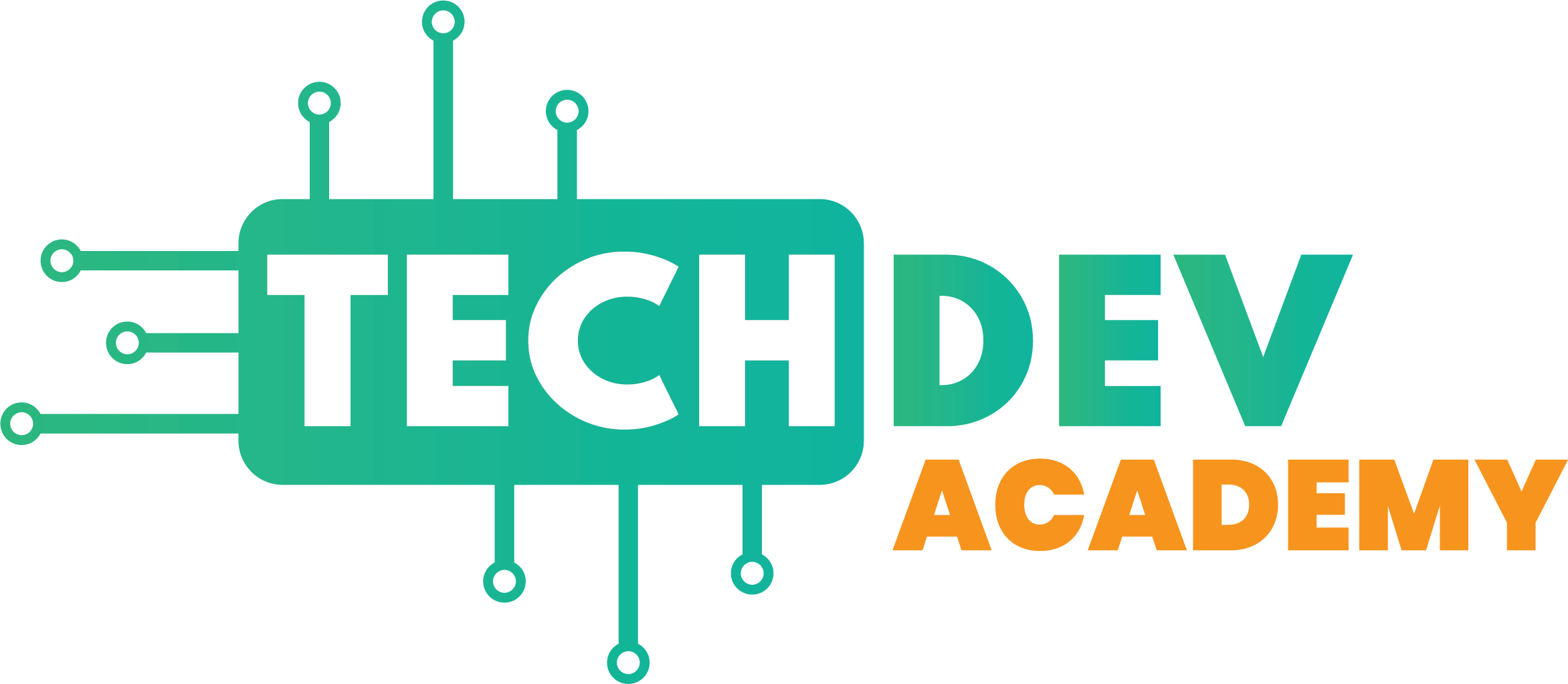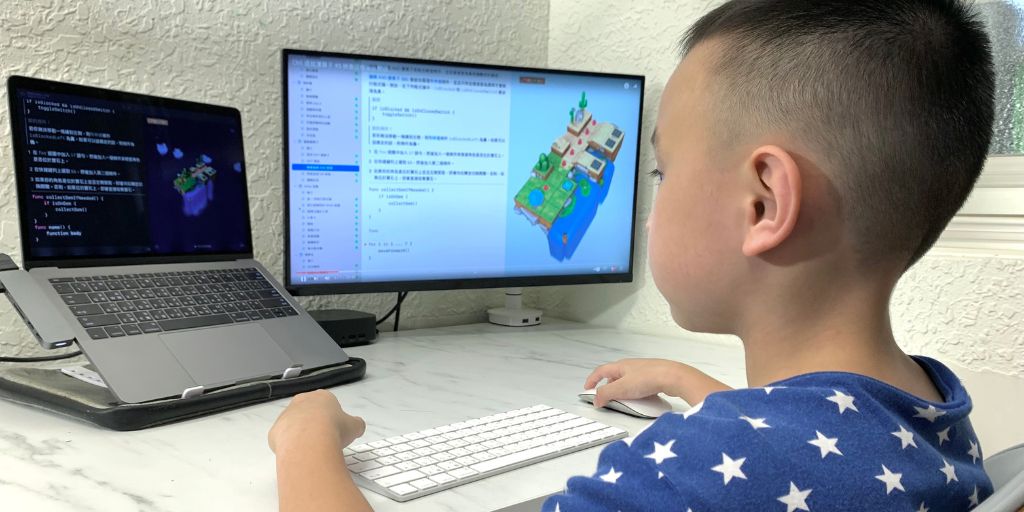In a world driven by technology, coding is now a critical skill. It’s a new form of literacy. For children, however, the abstract nature of coding can feel daunting or disconnected from their everyday experiences. Robotics offers a transformative solution, turning coding into a hands-on, engaging adventure. By building and programming robots, kids witness their code come to life, sparking curiosity and a passion for learning.
At TechDev Academy, a school dedicated to innovative education, robotics aligns perfectly with experiential learning philosophies. This article explores how robotics captivates young minds, guides parents and educators in selecting appropriate tools, and highlights the profound educational benefits for students.
The Connection Between Robotics and Programming
Robotics and coding are two sides of the same coin. A robot is a programmable machine that executes tasks based on coded instructions, making coding the language that brings robots to life. When children engage with robotics, they step into the role of a programmer. They learn to complex problems, design algorithms, and troubleshoot errors. This process not only teaches coding fundamentals but also fosters essential problem-solving skills.
Why Robotics Makes Coding Engaging
Unlike traditional coding exercises, which often involve creating software with delayed or virtual feedback, robotics provides immediate, tangible results. For example, programming a robot to navigate a maze requires understanding sequencing (ordering commands) and conditionals (if-then logic), concepts that become vivid when the robot physically moves.
This hands-on approach captivates children. It makes abstract ideas concrete and exciting. A study published in the International Journal of Child-Computer Interaction found that robotics activities effectively introduced computational thinking to primary school students. It enhances their problem-solving and collaboration skills.
Fostering Creativity and Confidence
Robotics also nurtures creativity by allowing kids to design and customize their projects. Whether creating a robot that dances or solves a puzzle, children express their individuality, boosting confidence. The iterative nature of robotics, building, testing, and refining, teaches persistence and resilience. For instance, a child debugging a robot’s erratic movement learns to analyze errors systematically, a skill that translates to coding and beyond. These experiences align with TechDev Academy’s mission to cultivate innovative, confident learners.
Real-World Applications
Robotics connects coding to real-world challenges, inspiring kids to see its relevance. Projects like programming a robot to sort objects mimic industrial automation, while others, like creating a robotic pet, spark imaginative problem-solving. Such activities demonstrate coding’s practical applications, encouraging students to envision themselves as future innovators.
Choosing the Right Robotics Kit for Kids
Selecting the right robotics kit is crucial for fostering a love for coding. For TechDev Academy’s community, the focus is on general features rather than specific products, ensuring alignment with non-traditional educational values. Here are key considerations for choosing a kit:
Key Features to Look For
Feature | Description |
Age Appropriateness | Kits should match the child’s developmental stage, with simpler options for younger kids (ages 4-6) and more complex ones for older students (ages 7+). |
Educational Value | Prioritize kits that teach coding, engineering, or scientific concepts, balancing fun with learning. |
Ease of Use | Clear instructions and intuitive interfaces (e.g., block-based coding) reduce frustration for beginners. |
Durability | High-quality, non-toxic materials ensure safety and longevity, especially for young children. |
Versatility | Kits offering multiple projects or expandable components grow with the child’s skills. |
Fun Factor | Engaging designs and interactive tasks keep kids motivated and excited. |
Price | Options range from budget-friendly (under $50) to advanced (over $100), allowing flexibility based on interest and budget. |
How Robotics Can Make Kids Fall in Love with Coding
Hands-On Learning
Robotics combines physical activity with programming, keeping kids engaged through tangible, real-world outcomes.
Problem Solving Made Fun
Kids learn logic and troubleshooting by experimenting with how robots react to different code changes.
Visual & Immediate Feedback
Seeing instant results from code brings clarity and joy, reinforcing learning through immediate success or adjustment.
Boosting Confidence
Accomplishing small robotics tasks helps build a child’s confidence and interest in technology and engineering.
If you’d like to learn more about how this can support your child’s development, feel free to reach out to us!
Contact UsTypes of Kits for Different Age Groups
- Ages 4-6: Screen-free kits with physical blocks or simple commands introduce basic sequencing. These are ideal for pre-readers, focusing on cause-and-effect relationships.
- Ages 6-9: Block-based programming kits, using visual interfaces like Scratch, teach coding fundamentals while allowing creative projects like moving robots or light displays.
- Ages 10+: Kits with text-based coding (e.g., Python) and advanced components like sensors challenge older kids, preparing them for more complex STEM pursuits.
Aligning with Educational Goals
Choose kits that allow open-ended projects, fostering creativity and critical thinking. Parents and educators should also consider the child’s interests, whether they love animals, space, or art, to ensure the kit resonates with their passions.
Enhancing Logical Thinking Through Robotics
Logical thinking is the skill of reasoning systematically and solving problems. It is a cornerstone of both coding and academic success. Robotics is a powerful tool for developing this skill, as it requires children to plan, sequence, and troubleshoot in a structured way.
Understanding Computational Thinking
Computational thinking, a subset of logical thinking, involves breaking down problems (decomposition), recognizing patterns, abstracting details, and designing algorithms. Robotics activities naturally promote these skills. For example, programming a robot to follow a line involves:
- Decomposition: Breaking the task into steps (move forward, detect line, adjust direction).
- Pattern Recognition: Identifying repetitive actions (e.g., checking the line’s position).
- Abstraction: Focusing on essential commands while ignoring irrelevant details.
- Algorithm Design: Creating a step-by-step plan for the robot’s behavior.
A study in California K-12 schools found that students using educational robots improved their logical thinking and problem-solving test scores by 15-20%, highlighting robotics’ impact.
Practical Examples
Consider a project where students program a robot to avoid obstacles. They must:
- Plan the robot’s path, considering potential barriers.
- Write code using conditionals (e.g., “if obstacle detected, turn left”).
- Test and debug, adjusting the code if the robot behaves unexpectedly.
This iterative process mirrors real-world problem-solving, teaching kids to think methodically and learn from mistakes. Another example is a storytelling project, where students program a robot to act out a narrative, requiring them to sequence actions and coordinate movements, further honing logical skills.
Long-Term Benefits
Beyond coding, logical thinking developed through robotics enhances performance in course subjects where structured reasoning is key. It also prepares students for future challenges by fostering a growth mindset and adaptability.
The Role of Robotics in Modern Education
In modern schools like TechDev Academy, education emphasizes hands-on, student-centered learning. Robotics aligns seamlessly with this philosophy and offers a dynamic platform for exploring STEM and beyond.
Experiential Learning
Robotics embodies experiential learning by allowing students to experiment, fail, and iterate. Unlike traditional memorization, robotics encourages discovery through doing, which is particularly effective for diverse learners. For instance, a student struggling with abstract math concepts might grasp them by programming a robot to measure distances, making learning tangible.
Breaking Stereotypes
Robotics also challenges stereotypes about STEM fields, showing that anyone can excel regardless of background. By engaging students early, robotics fosters inclusivity and confidence, aligning with TechDev Academy’s commitment to equitable education.
Preparing for the Future
As technology shapes the future, robotics equips students with skills for emerging careers in automation, AI, and engineering. A seven-year study found that early robotics education increased students’ interest in computing careers, underscoring its long-term impact.
Integrating Robotics into the Curriculum
Robotics can enhance learning across subjects, making it a versatile tool for non-traditional curricula.
Interdisciplinary Applications
Subject | Robotics Application |
Science | Build robots to demonstrate physics concepts like force, motion, or energy transfer. |
Math | Use robots for measurements or geometric challenges, reinforcing calculations and logic. |
LanguageArts | Write stories or reports about robotics projects, enhancing communication skills. |
Art | Design and decorate robots, blending creativity with technical skills. |
Social Studies | Explore robotics’ societal impact, such as automation in industries. |
Implementation Strategies
- Start Small: Begin with pilot programs, such as after-school clubs, to test interest and feasibility.
- Teacher Training: Provide professional development to equip educators with robotics knowledge, as shown in a study where trained teachers improved STEM instruction.
- Collaborative Projects: Encourage teamwork, such as group challenges to build a robot that solves a community problem, fostering collaboration and real-world application.
- Assessment: Use project-based assessments, like presentations or demonstrations, to evaluate learning outcomes, aligning with non-traditional evaluation methods.
Robotics and Soft Skills Development
Robotics extends beyond technical skills, cultivating soft skills essential for personal and professional success.
Collaboration and Communication
Many robotics projects are team-based, requiring students to share ideas, delegate tasks, and solve problems together. For example, in a robotics competition, one student might code while another builds, necessitating clear communication. Robotics improved students’ ability to articulate complex ideas, a skill valuable in any field.
Critical Thinking and Persistence
Debugging a robot’s code or refining its design teaches critical thinking and perseverance. Students learn to analyze failures, hypothesize solutions, and try again, building resilience. This mirrors the engineering design process, which emphasizes iterative improvement.
Real-World Relevance
Robotics projects often address real-world issues, such as environmental challenges or accessibility, encouraging students to think globally. This fosters empathy and a sense of purpose, aligning with TechDev Academy’s mission to develop well-rounded innovators.
Overcoming Challenges in Teaching Robotics
Implementing robotics in a non-traditional school setting may face hurdles, but these can be addressed with strategic planning.
Common Challenges
- Cost: While some kits are affordable, advanced options can be pricey.
- Resources: Limited access to materials or trained educators can hinder programs.
- Student Readiness: Varying skill levels may require differentiated instruction.
Solutions
- Budget-Friendly Options: Start with low-cost kits and seek grants or community partnerships to fund programs.
- Professional Development: Offer workshops to train teachers, as demonstrated by successful programs in Australian schools.
- Scaffolded Learning: Provide beginner-friendly projects and gradually increase complexity, ensuring all students can participate.
FAQs
At What Age Should Your Kids Start Learning Robotics?
Children can begin exploring robotics around age 6, with simple, screen-free kits suitable for ages 4-5. Research from Tufts University suggests ages 7-8 as ideal for structured learning, but readiness varies. Younger kids benefit from kits focusing on cause-and-effect, while older students can handle programming and building.
Can Robotics Help with School Performance?
Evidence suggests robotics improves STEM performance by making concepts engaging. A study showed students in robotics programs had higher math score growth than peers. Skills like problem-solving and critical thinking also enhance overall academic success, particularly in non-traditional settings where experiential learning is valued.
Are Robotics Kits Safe for Young Children?
Reputable kits are designed with safety in mind, using non-toxic, durable materials and age-appropriate components. Parents should verify the recommended age range and supervise younger children to ensure safe use, especially with small parts or tools.
Do Kids Need Prior Coding Knowledge?
Most robotics kits are beginner-friendly, requiring no prior coding knowledge. They often use visual programming tools like block-based interfaces, which teach coding concepts intuitively. Tutorials and guides included with kits support learning, making robotics accessible to all.
Is Robotics Expensive?
Robotics kits vary in cost, with budget-friendly options under $50 and advanced kits over $100. Affordable kits provide robust learning experiences, allowing families to start small and invest more as interest grows. Non-traditional schools can leverage cost-effective solutions to ensure accessibility.
Conclusion
Robotics is a gateway to coding that captivates children by blending creativity, problem-solving, and tangible outcomes. For TechDev Academy, it aligns with non-traditional education’s focus on experiential learning, fostering technical and soft skills that prepare students for a tech-driven future. By choosing the right tools and integrating robotics thoughtfully, parents and educators can ignite a lifelong passion for learning and innovation. Encourage your child to explore robotics. It’s a step toward unlocking their potential as tomorrow’s innovators.



